How Do Traffic Lights Work? Everything You Need To Know
-
Pete Ortiz
- Last updated:
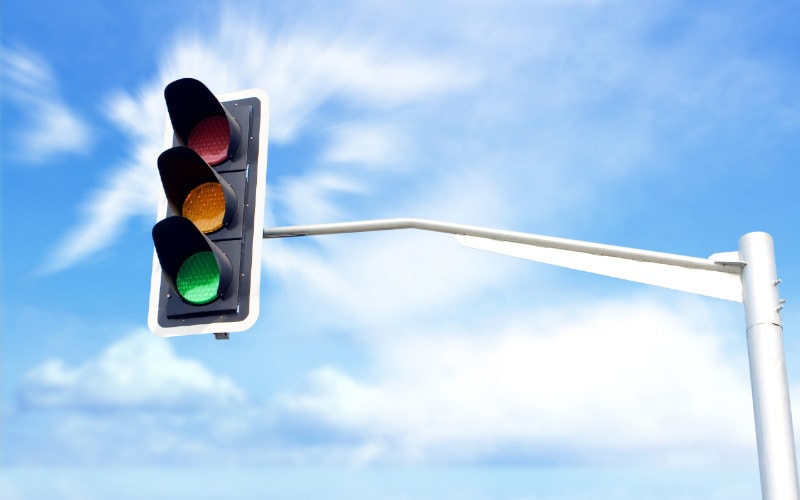
The first traffic light was invented in 1868. Well, it wasn’t invented per se, but adapted from a railroad signaling system. John Peak Knight was the brains behind this invention, and his iteration had two mobile signs connected to pivoting arms.
With the help of his team, they installed the lights at Parliament Square in London. But to facilitate visibility, especially at night, they had to top the posts using a gas-lit semaphore to facilitate visibility.
Everything seemed dandy, as they thought they found an effective solution to regulating traffic. Only 2 months later, a gas leak resulted in one of the lights exploding, taking with it the life of a traffic officer on duty. All traffic lights were then decommissioned immediately, and we had to wait for more than 40 years for a different, better version to be released.
It took that long because electricity wasn’t a thing back then. The main sources of energy at the time were not sustainable or cost-effective. This new version was first installed in Cleveland, and it only had two colors—red and green. A couple of years later, New York and Detroit added yellow and that’s how we ended up with three colors.
Long story short, that’s how the traffic lights that we use today were born and applied throughout the world. Let’s now look at the principle behind their operation.
How Do Traffic Lights Work?
The sole purpose of a traffic light is to take charge of traffic. But they don’t only manage vehicle traffic, as they are installed to safely direct bicycles and pedestrians as well. If you’ve studied their systems, you’ll know they are categorized into two groups—dynamic-controlled and fixed-time systems.
Fixed-Timer Systems
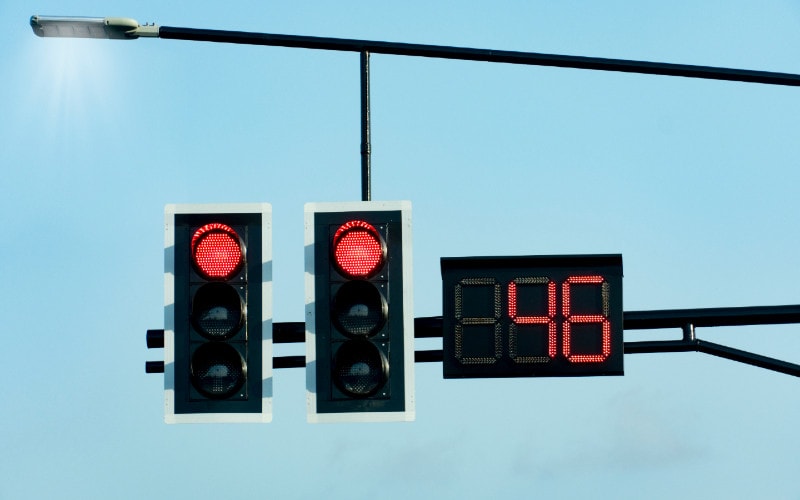
Traffic lights designed with a fixed-time system rely on timers. Without the timers, they can’t change lights at specific/fixed intervals. The intervals vary, as some are preset to change after every few seconds, while others run on minutes.
How long it takes for the lights to change from one color to the next will depend on the intersection’s historical traffic data. If the street is a busy one, that duration will be short to ensure traffic from one side doesn’t stay stationary for too long, consequently causing a jam.
All fixed-time traffic lights have controllers installed in them. They are known as electro-mechanical signal controllers, and they are responsible for holding the light colors for a predetermined duration, before switching to the next one. The dial timers are housed in the controllers, together with several other movable components.
Dynamic Systems
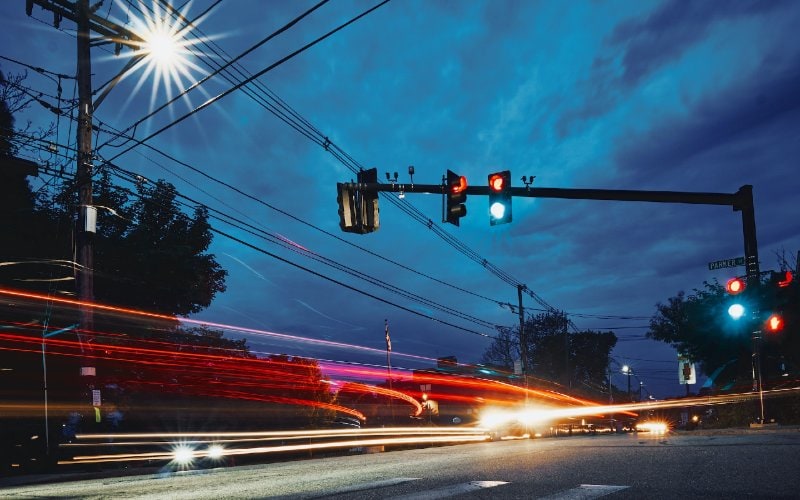
These systems are dynamic in nature, in that they are designed to adapt their timing to their current traffic situations. They are preinstalled with a sensor/detector, meant to communicate with the control system anytime they detect changes in traffic conditions.
For instance, if they sense that the intersection is jammed, they’ll right away send a signal to the control system, letting it know it needs to adjust its timing appropriately. Suffice it to say, that dynamic system signal lights are often programmed to ensure an efficient flow of traffic at all times.
Traffic lights designed to use dynamic systems have two detectors. One will be installed above the light, and the other one embedded in the road’s surface. So, if the sensor above the light doesn’t pick up anything, the one below will detect a car that’s approaching, and send the signal. And they are so effective that they even know if it’s just one car waiting to pass or multiple cars.
It’s safe to assume that we’ve all experienced this effect before, seeing as sometimes, the lights magically turn green from red as we approach an empty intersection.
Dynamic systems are a tad bit more complex compared to fixed timers. Besides the controller and detectors, they also have a variety of different circuits, clock signal generators, and timers. That’s why they can communicate with each other in real-time, without causing any delay in traffic. It only takes a 1-second delay to cause a traffic accident, so the timing has to be perfect.
We don’t have dynamic system traffic lights in every municipality because their sensors are costly to install and maintain. After running a cost-benefit analysis, we’ve realized they are better off being used in busier streets or large cities.
Different Types of Traffic Signals
We’ve already established that signals are either red, yellow, or green. But what you might not know is that they can also be categorized as either steady or flashing. And this is the difference:
Steady Traffic Signals
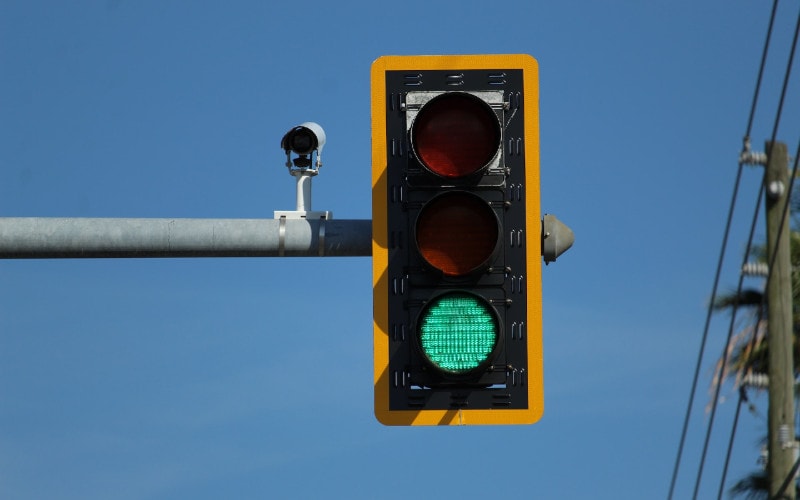
Red Signal
When you see the steady red light go up, you’re supposed to stop. And you’re expected to remain in that stationary position until the light changes to green. Running a red light is not just illegal, but dangerous as well.
Then again, not all states observe the same rules and regulations when it comes to traffic. For example, if you live in California, you’re allowed to run the lights under specific circumstances. As per their regulations, if you think it’s safe to run the red lights, you’re allowed to turn right but give way to any traffic or pedestrian in your path.
You also have the option of turning left, but only if you’re approaching the intersection using a one-way street, and planning to connect to another one-way street. Per usual, you first have to give way to whatever traffic or pedestrian you run into.
Nonetheless, some streets have a “NO TURN ON RED” sign. So, if you come across such a sign, even if you’re a resident of California, you’re not allowed to turn right or left in any circumstance, even if it’s clearly safe to turn.
Yellow Signal
A steady yellow light is a sign to all drivers who are approaching the intersection. It’s telling you that you need to be ready to start moving because the green light is about to change. You’re expected to stop when you see the yellow light or proceed cautiously. By that we mean, you have to be ready to stop should the light change.
To be safe, treat this signal the same way you would the red light.
Green Signal
Green is your “GO” sign. If you’re on the opposite side of the intersection—the side with the red signal—you have to give way to all pedestrians, cyclists, and vehicles on the other side.
Flashing Traffic Signals
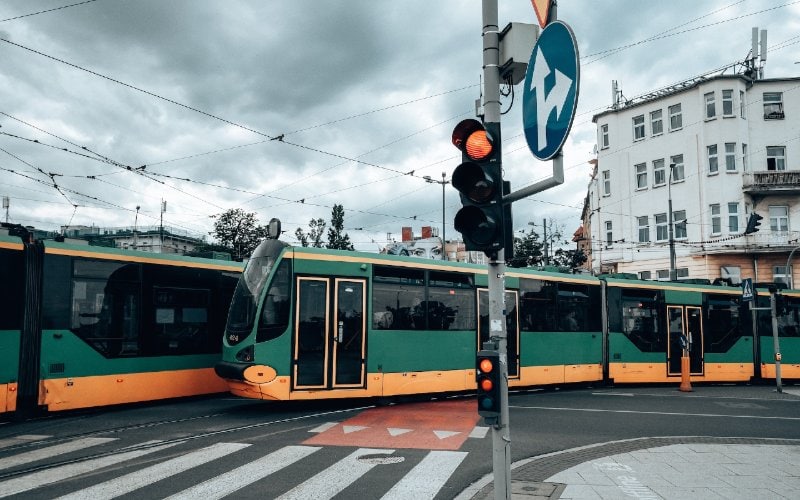
We have two types of flashing signals. You’ll either see a red flashing signal or a yellow one. The commonality between the two is that they’re both meant to warn on-coming traffic of a dangerous intersection ahead.
When you see a flashing red signal, treat it the same way you would a “STOP” sign. Also, remember to apply all the right-of-way rules that you learned in driving school. The yellow flashing signal will be telling you to decelerate and be ready to stop.
They usually install it near school crossings, hospitals, and several other areas that are considered accident-prone. In addition, you have to yield to any form of traffic that you come across at the intersection.
Advantages of Traffic Lights
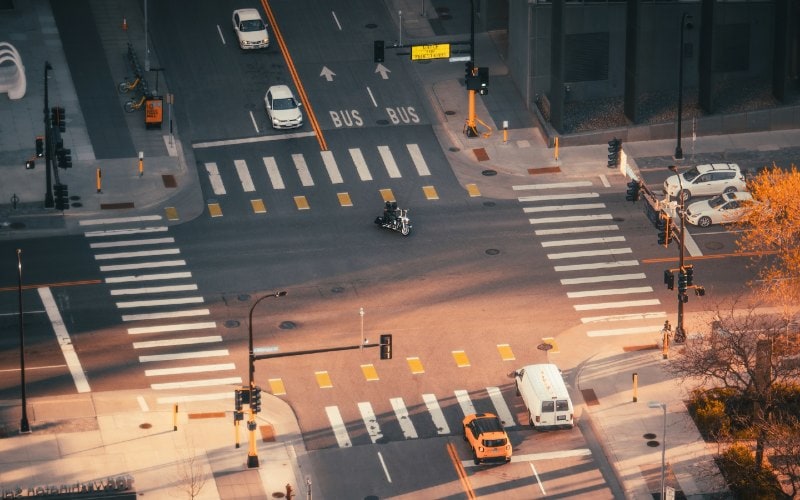
Efficient Intersection Control
Controlling traffic at our road intersections would have been an issue without the help of the traffic lights. Their systems have been designed in such a way that allows them to relay messages on when to assign right-of-way, and when not to. That way, it becomes easier for conflicting streams of traffic to share an intersection without causing an incident.
Time-Saving
This might sound counterproductive to some people, but it’s the truth. If we never had traffic lights installed in our intersections, it would be difficult for officers to interrupt heavy flows of traffic, so that minor movements can cross over and get to wherever they are going, on time. The traffic signal detectors usually detect minor movement on the opposite street and permit their crossing before more vehicles cue up to create a jam.
Improved Safety
The traffic handling capacity in our busiest street intersections has increased thanks to our traffic lights. As such, they have proved to be invaluable devices in ensuring pedestrians and cyclists are well-protected against vehicular traffic. When installed in the right positions, they normally reduce roadside collisions.
Disadvantages of Traffic Lights
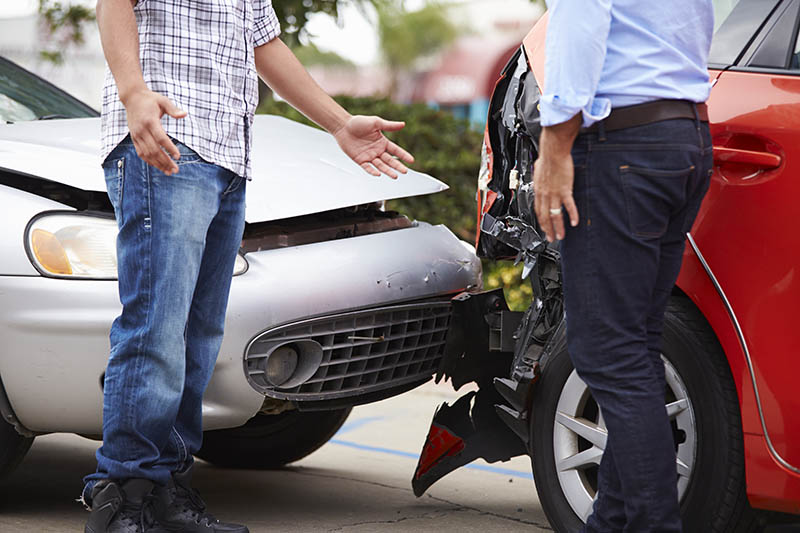
Increase in Rear-End Collisions
While they are effective at decreasing the amount of right-angle (broadside) collisions that occur annually, traffic lights have been listed as one of the main causes of rear-end collisions. Such collisions occur more frequently when motorists stop abruptly when the light turns red. Hence, causing distracted motorists coming from behind to ram into the rear end of the cars in front.
Safety Deterioration
Installing a traffic light at an intersection that’s rarely busy could lead to a deterioration in the overall safety of motorists, cyclists, and pedestrians. Road users who often use that particular intersection will automatically assume that there’s no traffic to worry about, meaning they won’t see the need to slow down even if the light’s red. That’s how accidents happen.
Excessive Traffic Delay
Depending on how you look at it, managing the flow of traffic can cause a traffic delay or save time. If you’re the one being forced to wait as the traffic in a turn lane safely crosses to the other side, you won’t be a big fan of traffic lights. These delays are usually costly in the long run, as they translate to fuel wastage and increased air pollution.
Frequently Asked Questions (FAQs)
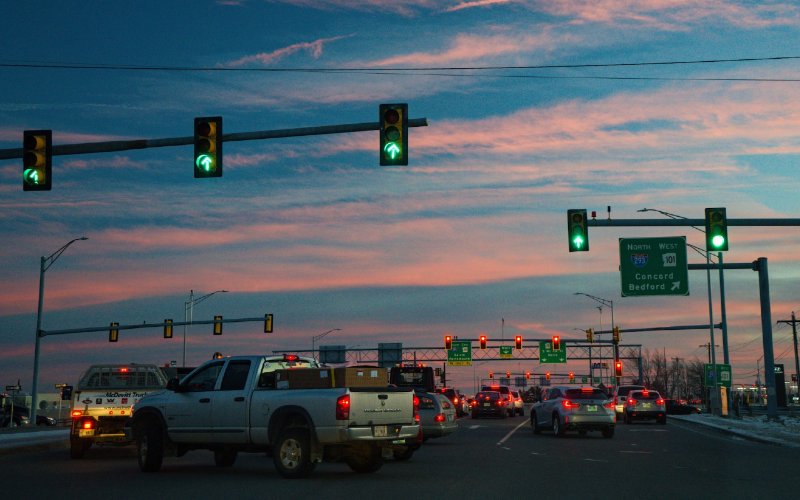
What Is a Traffic Light Trigger?
A traffic light trigger is something that can make the signals change. For example, emergency vehicles. We don’t know if you’ve ever taken notice of the white and blue lights installed on our traffic light beams.
They are pre-emption devices that give emergency vehicles the ticket to activate a green signal. They have sensors that actively listen to any sound that resembles that of a siren. And when they detect one, they’ll let the signal controller know they are supposed to switch back to green.
What’s the Difference Between a Traffic Light’s Red and Green Arrow?
First off, the arrows are meant to tell motorists the direction that they are expected to turn. If the lights are red, but the arrow is green, pay attention to the direction it’s pointing.
If it’s pointing left, you’re supposed to come to a complete stop as you approach the intersection, and then slowly turn left. But you have to be in the right lane for you to safely turn left. Also, don’t forget to yield to other cars, cyclists, or pedestrians.
Assuming the arrow is red but pointed in the right direction, you’re to come to a complete stop at the intersection and not turn right.

Will Pushing the Pedestrian Crossing Button Quickly Trigger the Green Light?
Nope. Even if you decide to push it a gazillion times, the lights will only switch back to green when the signal controller says so. Pushing the button lets the controller know that someone is waiting to pass. So just give it a couple of minutes and you’ll be permitted.
Conclusion
In general, the only time that most people care about how traffic lights work is when they are stuck in traffic, running late for an event. Understanding how some of these technologies work is essential, as you might not know when such knowledge might come in handy.
It’s also important to note that traffic lights are not the panacea to all our traffic problems, and accidents do still occur.
Featured Image Credit: viphotos, Shutterstock
Contents




